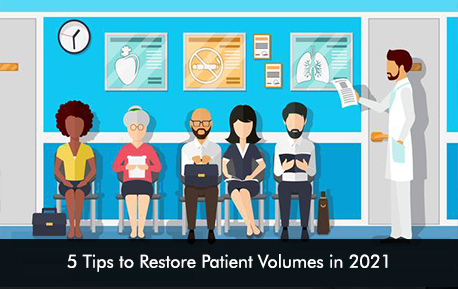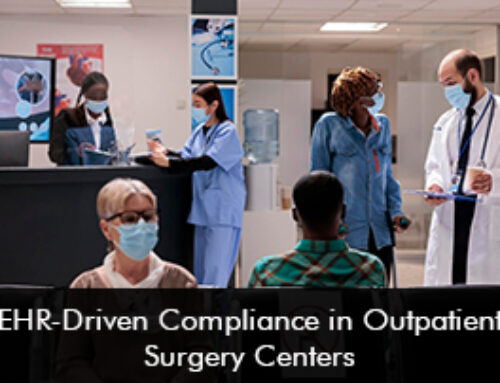The COVID-19 pandemic hit the world hard and caused many changes in the economy, business, and the healthcare world. Governments, public health authorities, and healthcare providers urged people to wear masks and avoid sitting in large groups, this also meant waiting at the doctor’s office. To follow all the protocols correctly patients started canceling appointments and postponing procedures that were non-emergency to avoid the risk of getting exposed to the contagious virus. With this shift in patient behavior, medical practices experienced a great fall in-patient volumes and traffic which ultimately has reduced the revenue stream. A report from the Medical Group Management Association revealed that on average practices had to face a 60% decline in patient volume levels as the infection rate was escalating and making waves in the media.
In this article, we aim to provide practices with helpful and proactive strategies which they can implement in 2021 to rebuild patient traffic.
5 Tips to Rebuild Patient Volumes in your Clinic
- Offer telemedicine solutions– Many medical practices and hospitals were quick to respond to the pandemic by providing virtual care options to their patients via the Telemedicine EMR Software platform. If your practice hasn’t used telehealth then now is the time to begin restoring patient volumes through a convenient and safe online video conferencing facility. You can let your patients know about the new facility through your website, newsletters, or emails. Patients see telemedicine as an effective and safe way to receive care from the comfort of their homes.
- Open up your practice slowly – In these uncertain times where the third wave is still taking its toll over the world, we advise you to reopen in phases. This means medical practices can slowly reopen over a 4-6 week time frame. As each week passes in-office scheduling can increase as compared to telemedicine appointments.
- Touch base with patients who canceled during the heat of the pandemic – Your front desk staff members must go through patient records and tick off the patients that canceled their appointment amidst the pandemic. Reach out to these patients and tell them that you are reopening and following all outlines SOPs so patients can come back safely to follow-up with their pending examinations and procedures.
- Communicate with your patients about safety protocols being followed at your clinic – It can be relieving for patients to know that their clinic takes safety precautions seriously. Explain to them that your practice has installed sanitization stations, a limited number of people at a time with a 6 feet distance, and wearing of masks necessary. This will encourage patients who have skipped their appointments and vaccinations to come back to you quickly as you have given assurance to them about following all health protocols for the wellbeing of your patients.
- Assist patients to get appointments as soon as possible and securely – As people adjust to the new normal and start visiting the clinic with all SOPs they mustn’t experience any unnecessary delays. To avoid this issue clinics can remain open for late hours two days a week and if they can afford they can also offer the option of weekend appointments. For your patient’s safety and everyone around you offer innovative ways to wait for an appointment. A limited number of patients should be allowed to enter the office and social distancing can be practiced by waiting at the parking lot. For example, if a patient needs to drop a urine sample they wait in the car until a staff member comes out and takes it. This way you are practicing social distancing and keeping everyone safe from getting the virus at your office.
Moving ahead
Increasing patient volumes will be one of the major priorities of hospitals and clinics to make sure coordinated care is provided and their practice doesn’t go out of business. The implementation of the above-mentioned strategies can help you combat the issue of reduced patient volumes, the key is to focus on patient outreach and practice all safety protocols in the best possible way.







